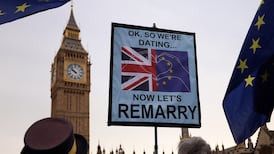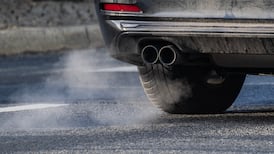The deaths of over 50 civilians in the Friday shelling of the Kramatorsk railway station in eastern Ukraine mark the grisly symbolic opening of the second chapter of Russia's war on Ukraine. Russia is saying in the language of blood that the reorientation of its primary offensive to the east, away from Kyiv and towards the Donbas region, will be as brutal and unsparing of civilians.
War crimes, it appears, are not incidental to the Russian war machine, but part of its method. Copious witness testimony in recent days attests to its deliberate nature. And German intelligence has now intercepted open, candid discussion on radio between Russian troops of their use of torture and civilian killing.
But the new chapter will also usher in a new type of war, military observers warn – a more conventional ground war from entrenched positions involving heavy fighting into the foreseeable future. And that reality has important implications for how Ukraine will fight to defend itself, and for how western allies continue to help.
Ukraine’s success on the battlefields around Kyiv has to date been largely thanks to nimble guerrilla-style tactics against stalled, static forces, and the smart use of portable equipment, largely supplied by the west, including drones and shoulder-held anti-tank missiles.
Visiting Brussels on Thursday for a Nato foreign ministers' meeting, Ukraine's foreign minister, Dmytro Kuleba, put his requirements simply as "weapons, weapons, weapons", and stepped up his government's demands for tanks, fighter jets and long-range anti-aircraft missile systems. But fears of provoking escalation into a direct conflict with Nato mean that the west remains unwilling to supply aircraft. And crates of Javelin missiles are one thing, dispatching highly visible convoys of armoured vehicles quite another.
The European Union has so far approved €900 million in weapons aid and another €100 million of non-lethal supplies, and Nato ministers made clear more will be forthcoming, largely from its member states on a bilateral basis. But it will not be easy. Some countries, like Estonia, are already finding that their stocks of weapons are depleted, while supplies of tanks and aged kit from other former Warsaw pact countries that can be put to use quickly are also in short supply. The Czechs are reported to be supplying 100 Soviet-designed T-72 tanks immediately, and such weapons can easily be used immediately by Ukraine's forces.
More problematic is the modern heavy materiel potentially on offer from Germany and others for this new stage of war – tanks but also vital anti-aircraft batteries. These will require training that takes time. It is not clear, however, how much time Ukraine has. Russia's redeployment of massive firepower to the Donbas is well under way.










